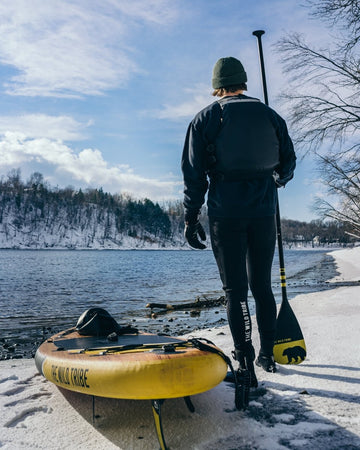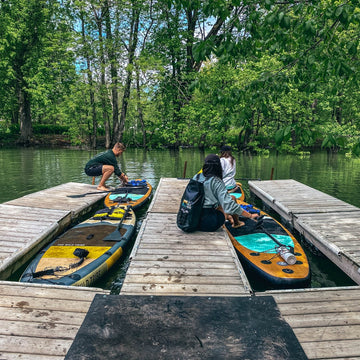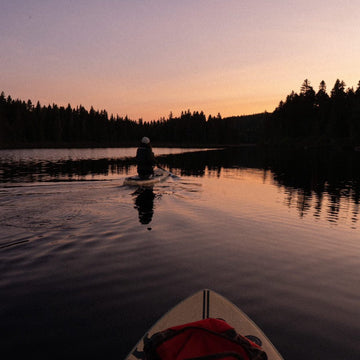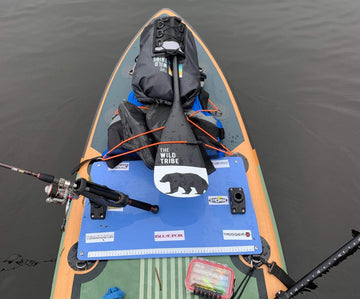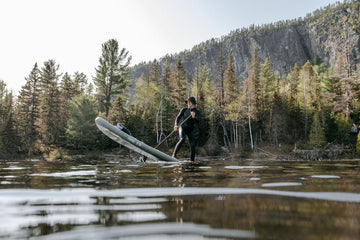Cold Water SUP Guide 101

HOW TO DRESS
For warmth, invest in quality neoprene boots. Despite not being fully waterproof, neoprene traps a thin water layer, adjusting its temperature to your body heat, providing insulation. It's crucial to wear a wetsuit, especially for safety considerations. Given variables like the water's temperature, the likelihood of falling in, and the duration of your trip, the wetsuit ensures you are adequately protected and can embark on your journey with confidence. For hiking, wear a moisture-wicking base, then layers like jackets and gloves. Use running tights for legs and a lightweight hat for the head. Avoid cotton and bulky items. Remember that a wetsuit can get very hot, especially out of the water, but if you fall off the floor, you'll appreciate it!

SAFETY ON WATER
Always wear a flotation jacket in cold water (below 15°C) to prevent thermal shock, which can impair decision-making, like remounting your paddleboard. Always stay near the shore and avoid pushing limits during off-season paddling. Check the weather report before heading out. Many assume flat water doesn't require an ankle strap. However, even expert paddlers should use one. Your board is your primary flotation device, and a strap ensures it stays close, within 10 feet, during mishaps. Always inform someone of your location and return time if paddling solo, especially off-season when fewer people are around. Stay vigilant and prioritize safety.

AVOID THE ICE
What does this mean? Basically, avoid ice. Ice is heavy, sharp and unpredictable. It won't do you or your inflatable paddleboard any favors. If you go out on the water in the colder months, be sure to avoid sections of frozen water. Don't walk on the ice to get to the water and don't hike when large chunks of ice are floating around you.

WEATHER REPORT
For optimal paddleboarding, seek calm winds and clear skies. With quick weather changes in fall and winter, avoid racing storms. Rain and snow can reduce visibility, making it easy to go off-course and be unseen by others. In cooler months, the sun sets earlier, and temperatures drop fast even before sunset. Aim to return before the sun's descent. Check the local forecast for sunset times.

POST-HIKE TIPS AND TRICKS
Bring extra warm clothes to put on after your SUP session. It's a good idea to keep a towel, warm sweater, pants and jacket in your car so that you have something warm and dry to wear after a trip on the water. You can also bring a thermos with something warm to eat or drink after your paddleboarding session to help you stay warm and energized after spending time on the water.

